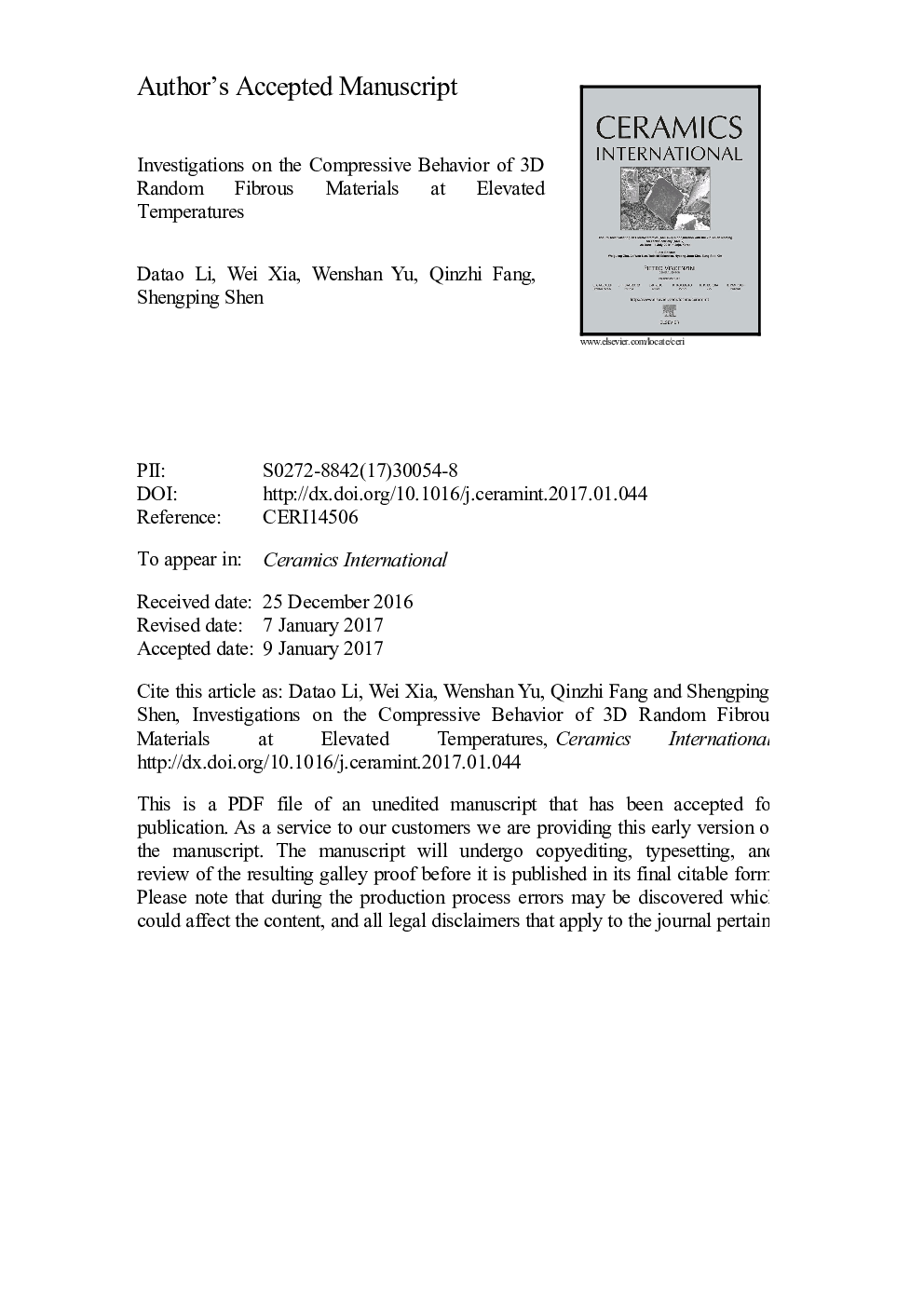| Article ID | Journal | Published Year | Pages | File Type |
|---|---|---|---|---|
| 5438658 | Ceramics International | 2017 | 31 Pages |
Abstract
By means of the experimental method, micromechanical model and Finite Element Method (FEM), this paper studied the compressive behaviors of the three-dimensional random fibrous (3D RF) material in the through-the-thickness (TTT) and in-plane (IP) directions at elevated temperatures. The compressive experiments showed that the fracture strength and Young's modulus of the 3D RF material in the TTT and IP directions decrease as increasing temperature. The specimens fracture through breaking the fibers under the bending deformation, while almost all the bonding zones keep intact. A simple micromechanical model and a FEM model are developed to simulate the mechanical properties of the 3D RF material. The micromechanical model ignores the randomness of the fibers, while in the FEM model special attention is drawn to the influence of the morphological characteristic. Numerical results from the micromechanical model and FEM model agree well with the observations from the compressive experiments.
Related Topics
Physical Sciences and Engineering
Materials Science
Ceramics and Composites
Authors
Datao Li, Wei Xia, Wenshan Yu, Qinzhi Fang, Shengping Shen,
